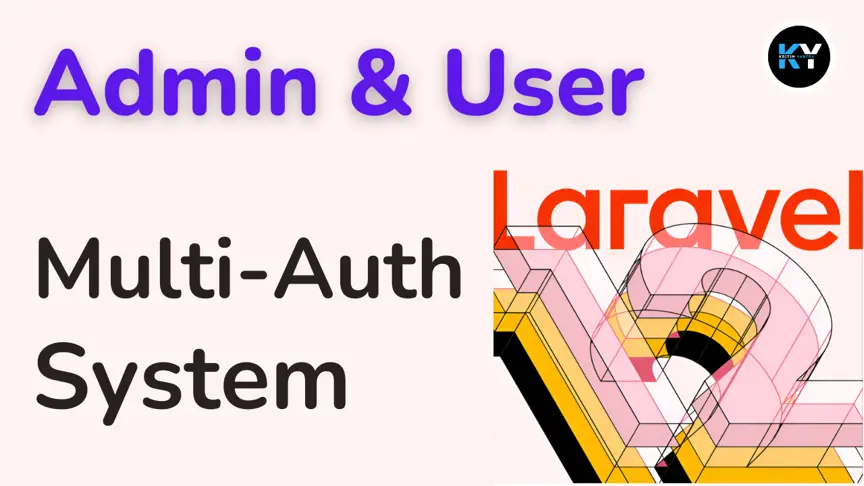Mastering Multi-Tenancy: A Beautiful Guide for Developers and SaaS Builders

Kritim Yantra
May 06, 2025
“One codebase, many customers — separated, secure, scalable.”
Welcome to the world of Multi-Tenancy.
Whether you're building a CRM, a SaaS product, a school system, or a multi-store eCommerce platform, chances are — you’ll want to serve multiple clients with isolated data but the same codebase.
This is where multi-tenancy shines.
🌐 What is Multi-Tenancy?
Multi-tenancy is a software architecture in which a single instance of an application serves multiple tenants (clients).
Each tenant could be:
- A company
- A school
- A store
- A user group
They share the application, but their data and configurations are completely isolated.
🧠 Real-Life Analogy
Imagine a high-rise apartment building:
- Each floor represents a tenant (company)
- The building (codebase) is shared
- But every floor has its own residents (data), keys (auth), and design (theme)
This is multi-tenancy: same structure, unique units.
📍 Multi-Tenancy URL Structures
Depending on your business needs, tenants can be identified in several ways:
1. Subdomain Based
Example:
acme.yoursaas.com
globex.yoursaas.com
Each subdomain represents a different tenant.
2. Custom Domain Based
Example:
acme.com
globex.org
Ideal for white-labeled solutions where customers use their own domain.
3. Path-Based
Example:
yoursaas.com/acme
yoursaas.com/globex
Easiest to implement but less professional-looking. Often used for MVPs.
🧰 Types of Multi-Tenancy Architecture
1. Single Database, Shared Schema
All tenants share the same database and tables, separated by a tenant_id column.
Pros:
- Easy setup
- Faster deployments
Cons:
- Difficult to scale
- Risk of data leaks if queries aren’t careful
users
+----+-----------+------------+
| id | tenant_id | name |
+----+-----------+------------+
| 1 | acme | John Doe |
| 2 | globex | Jane Smith |
+----+-----------+------------+
2. Single Database, Separate Schemas
Each tenant has their own schema (like a namespace) within the same database.
Pros:
- Better isolation
- Easier to manage data
Cons:
- Not all databases support this (e.g., MySQL doesn’t natively)
3. Multi-Database
Each tenant has a completely separate database.
Pros:
- Maximum isolation
- Perfect for large clients or enterprise SaaS
Cons:
- More complex
- More resources
Example:
acme_dbglobex_db
💡 Why Multi-Tenancy Is So Popular
- Efficient Scaling: One app can serve thousands of customers
- Cost Effective: Shared codebase means cheaper infrastructure
- Rapid Onboarding: Add tenants dynamically
- Custom Configs: Each tenant can have their own branding, plans, modules
- Dev Velocity: One bug fix benefits all tenants
🧪 Use Cases of Multi-Tenancy
- 🏫 School Management Systems (one app, multiple schools)
- 💼 SaaS CRM (each company gets a separate dashboard)
- 🏪 Multi-store eCommerce (vendors manage their own stores)
- 📊 Analytics platforms (clients track their own data)
💻 Tech Stack to Build a Multi-Tenant App
🔹 Backend Languages:
- Laravel (PHP) → Excellent with stancl/tenancy
- Django (Python) → Use
django-tenantsordjango-tenant-schemas - Node.js → Custom implementation or with frameworks like NestJS
- Rails → Use gems like
apartment
🔹 Databases:
- MySQL/PostgreSQL → Both support multi-database or tenant_id columns
- MongoDB → Can isolate tenants via collections or databases
🔹 Frontend:
- Vue.js, React, or Blade (Laravel) for tenant-specific UIs
🔹 DevOps Tools:
- Docker: For containerizing each tenant's services
- Kubernetes: Advanced, for large-scale deployments
- Redis: Caching per tenant
🔹 Authentication:
- Laravel Jetstream/Breeze with tenant-based guards
- OAuth2 for multi-tenant access control
🧑💻 What You Need to Build a Multi-Tenant App
✅ Core Requirements:
- 🔐 Tenant Identification — Detect tenant via domain or path
- 📦 Tenant-aware Models — Scope queries to each tenant
- 🏗️ Dynamic Migrations — Create tenant-specific tables on-the-fly
- 🛠️ Onboarding Flow — Create tenants dynamically via admin panel
- 📁 Central Models — Billing, Plans, and Admin belong to central app
🔨 How to Build One — Laravel + stancl/tenancy Example
1. Install Laravel
composer create-project laravel/laravel my-saas-app
2. Install Tenancy Package
composer require stancl/tenancy
php artisan tenancy:install
php artisan migrate
3. Create a Tenant
Tenant::create([
'id' => 'acme',
])->domains()->create([
'domain' => 'acme.localhost'
]);
4. Add Tenant Routes
// routes/tenant.php
Route::get('/', function () {
return 'Tenant: ' . tenant('id');
});
5. Migrate Tenant DB
php artisan tenancy:make:migration create_users_table
php artisan tenants:migrate
🧙 Real-World Tips
- Store tenant-specific settings in a
settingstable per tenant - Use events like
TenantCreatedto seed default data - Use queues and jobs with tenant context
- Monitor tenant DB sizes and query performance
- Offer backups for premium tenants
🚀 Conclusion
Multi-tenancy is no longer optional — it’s the future of scalable, flexible, and profitable SaaS architecture.
With the right tools like Laravel and stancl/tenancy, even solo developers can build powerful SaaS platforms that serve hundreds or thousands of clients with just one codebase.
💬 Want Help Building Yours?
Let me know your SaaS idea — I’ll guide you through choosing the right architecture, tools, and packages. Or I can provide a starter boilerplate too.
Comments
No comments yet. Be the first to comment!
Please log in to post a comment:
Sign in with GoogleRelated Posts

 Kritim Yantra
Kritim Yantra

 Kritim Yantra
Kritim Yantra
 Kritim Yantra
Kritim Yantra